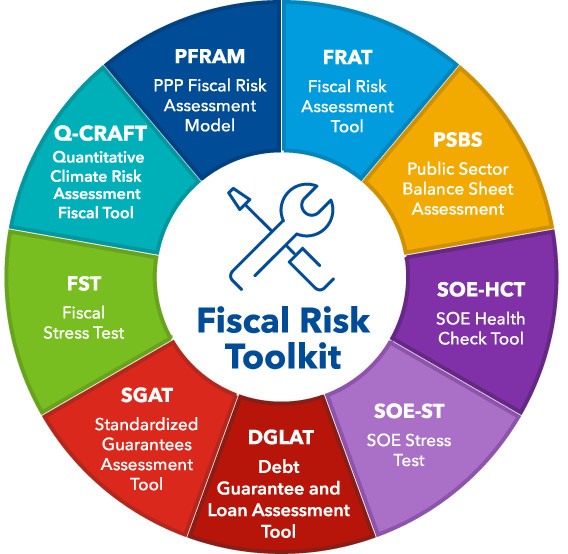What does a Balance Sheet Assessment do?
- Helps governments compile a public sector balance sheets, bringing in all assets, debt and non-debt liabilities of general government and public corporations into a single comprehensive picture of the public finances.
- Identifies vulnerabilities and interlinkages throughout the public sector, including interest, exchange rate and maturity mismatches across assets and liabilities, and how cross holdings of assets can spread risks through government.
- Applies a stress test to understand the impact of a combined macroeconomic and contingent liability shock to assess the consequences for public sector net worth.
- Benchmark aggregate rates of returns of public assets to identify scope for better management of assets, with an eye to improve financial and social returns.
- Compile a comprehensive balance sheet that incorporates current assets and liabilities and the present value of future revenues and payments under current policies.
Why analyze balance sheet risks?
Public sector balance sheets bring together all of the assets and liabilities that government controls, including public corporations, infrastructure, natural resources, and pension liabilities, to provide a comprehensive picture of public wealth. Public assets average more than 200 percent of GDP, and across 38 countries (representing two-thirds of world GDP) are worth USD103 trillion.
By incorporating all public sector assets and liabilities, PSBS analysis helps to ensure countries have a comprehensive and reliable picture of the full scale of the assets they own and liabilities they owe, facilitating increased transparency and accountability for management of public resources and more effective identification of fiscal vulnerabilities and interlinkages throughout the public sector.
How can PSBS Assessments support fiscal policymaking?
- Better understand and manage fiscal risks by helping to identify risks emanating from outside the general government perimeter (such as those related to public corporations, pension, or sovereign wealth funds) and understand the interlinkages between the various assets and liabilities of the government. Identifying and analyzing these risks can allow policy makers to take early policy interventions.
- Facilitate policy analysis and decision making by ensuring the full costs and benefits of policy decisions are considered through their impact on broad fiscal aggregates such as public sector net worth.
- Promote fiscal transparency by disclosing all of the assets and liabilities of the public sector which promotes additional scrutiny and accountability.
- Improve return on public asset returns: By shining a spotlight on government assets, it can also inform decisions on which assets governments should retain and identify where assets are not yielding sufficient returns and need to be better managed.
- Support long-term fiscal sustainability by showing how the current state of the public finances match up against the long-term cost of existing policy commitments. Combining current wealth with the long-term costs of policies provides a guide to policy changes needed to adjust to the long-term costs of aging.

